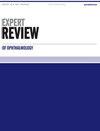YouTube上的过敏性结膜炎视频是可靠的信息来源吗?
IF 0.9
Q4 OPHTHALMOLOGY
引用次数: 0
摘要
社交媒体和YouTube被广泛用于获取医疗信息。我们的目的是评估和评估YouTube上关于眼部过敏的视频的质量和可靠性,并确定它们是否是值得信赖的信息来源。研究设计和方法对搜索词“过敏性结膜炎”、“特应性结膜炎”、“过敏性结膜炎症状”和“过敏性结膜炎滴眼液”的前60个视频进行分析,使用修改后的DISCERN、全球质量评分、美国医学协会杂志评分和健康网代码标准。视频的总观看次数、观看率、点赞、评论和持续时间被记录下来,并被评估为有用、无用和误导。结果视频的mDISCERN评分平均为3.25±0.76(中等),JAMA评分平均为2.76±0.64(中等),GQS评分平均为3.13±0.8(中等),HONcode评分平均为7.8±2.6(中等)。最常见的视频来源是卫生专业人员(61.9%)。结论有可靠的发布者的变应性结膜炎视频质量一般。需要对过敏性结膜炎上传内容进行质量规范。卫生专业人员应该努力改进视频内容,并提供更多关于过敏性结膜炎治疗的信息。关键词:过敏性疾病;眼过敏症;过敏性结膜炎;honcode免责声明作为对作者和研究人员的服务,我们提供了这个版本的接受手稿(AM)。在最终出版版本记录(VoR)之前,将对该手稿进行编辑、排版和审查。在制作和印前,可能会发现可能影响内容的错误,所有适用于期刊的法律免责声明也与这些版本有关。利益声明作者与任何组织或实体没有任何关联关系或财务参与,这些组织或实体与手稿中讨论的主题或材料有经济利益或经济冲突。这包括雇佣、咨询、酬金、股票所有权或期权、专家证词、获得或未决的赠款或专利,或版税。作者贡献声明:所有作者都对文章的概念和设计做出了贡献,并对相关文献进行了解释,所有作者都参与了文章的写作和/或对其进行了智力内容的修改。审稿人披露本文的每位审稿人没有相关的财务或其他关系需要披露。图1:研究中视频的选择流程图。附加信息本文未获得资助。本文章由计算机程序翻译,如有差异,请以英文原文为准。
Are allergic conjunctivitis videos on YouTube a reliable source of information?
ABSTRACTBackground Social media as well as YouTube are widely used to gain information on medical conditions. We aimed to assess and evaluate the quality and reliability of YouTube videos on ocular allergies and determine whether they are a trustworthy source of information.Research design and methods The first 60 videos from the search terms ‘allergic conjunctivitis’, ‘atopic conjunctivitis’, ‘allergic conjunctivitis symptoms’, and ‘allergic conjunctivitis eye drops’ were analyzed using modified DISCERN, Global Quality Score, Journal of the American Medical Association scores and Health on the Net Code criteria. The total number of views, view ratio, likes, comments, and duration were recorded and videos were evaluated as useful, non-useful, and misleading.Results The average mDISCERN score for the videos was 3.25 ± 0.76 (moderate), the average JAMA score was 2.76 ± 0.64 (intermediate), the average GQS score was 3.13 ± 0.8 (intermediate) and the average HONcode score was 7.8 ± 2.6 (intermediate). The most common video source was health professionals (61.9%).Conclusions Videos on allergic conjunctivitis while having reliable publishers are of moderate quality. Quality regulation of content uploaded on allergic conjunctivitis is needed. Health professionals should try to improve video content and provide more information on the treatment of allergic conjunctivitis.KEYWORDS: Allergic diseasesYouTubeocular allergyallergic conjunctivitismDISCERNJAMAGQS; HONcodeDisclaimerAs a service to authors and researchers we are providing this version of an accepted manuscript (AM). Copyediting, typesetting, and review of the resulting proofs will be undertaken on this manuscript before final publication of the Version of Record (VoR). During production and pre-press, errors may be discovered which could affect the content, and all legal disclaimers that apply to the journal relate to these versions also. Declaration of interestsThe authors have no relevant affiliations or financial involvement with any organization or entity with a financial interest in or financial conflict with the subject matter or materials discussed in the manuscript. This includes employment, consultancies, honoraria, stock ownership or options, expert testimony, grants or patents received or pending, or royaltiesAuthor contribution statement: All authors contributed to the conception and design of the article and interpreting the relevant literature, all authors were involved in writing the article and/or revised it for intellectual content.Reviewer disclosuresPeer reviewers on this manuscript have no relevant financial or other relationships to disclose.Figure 1: Flowchart of selection of videos included in the study.Display full sizeAdditional informationFundingThis paper was not funded.
求助全文
通过发布文献求助,成功后即可免费获取论文全文。
去求助
来源期刊

Expert Review of Ophthalmology
Health Professions-Optometry
CiteScore
1.40
自引率
0.00%
发文量
39
期刊介绍:
The worldwide problem of visual impairment is set to increase, as we are seeing increased longevity in developed countries. This will produce a crisis in vision care unless concerted action is taken. The substantial value that ophthalmic interventions confer to patients with eye diseases has led to intense research efforts in this area in recent years, with corresponding improvements in treatment, ophthalmic instrumentation and surgical techniques. As a result, the future for ophthalmology holds great promise as further exciting and innovative developments unfold.
 求助内容:
求助内容: 应助结果提醒方式:
应助结果提醒方式:


